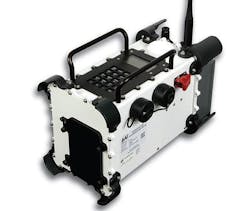Textron to build test and measurement equipment for systems designed to detect and jam IEDs
Officials of the Naval Explosive Ordnance Disposal Technology Division in Indian Head, Md., announced a $7. million order Tuesday to Textron Electronic Systems to produce the AN/GLM-11 universal test set for IED jamming systems.
The contract also calls for Textron to provide AN/GLM-11 engineering services and program and configuration management. Textron Electronic Systems formerly was known as AAI Corp -- a company Textron acquired in 2007.
The order is for the second option for universal test set production. Two years ago Textron won a $27.3 million contract to produce versions 1 and 2 of the AN/GLM-11 universal test set.
The AN/GLM-11 is a portable, battery-powered, programmable, ruggedized RF test system designed to validate IED jamming equipment. The unit provides in-field testing for warfighters employing IED jammers prior to departure, Textron officials say.
The AN/GLM-11 system executes preprogrammed test sequences that replicate threats and measures expected jammer responses. These measurements use the build emitter, build measurement, and build sequence applications of the AN/GLM-11.
An operator display on the AN/GLM-11 automatically provides the operator with go/no-go test results. Under a password option, advanced users also can call up a spectral display of the jammer response.
The AN/GLM-11 can test many communications and communications-jamming systems deployed worldwide, Textron officials say. It has a frequency range sufficient for current and future counter-radio-controlled IED electronic warfare (CREW) jammers, officials say.
The unit's stimulus modulation can provide continuous wave; AM and FM; amplitude-shift keying; phase-shift keying; frequency-shift keying; minimum-shift keying; and Gaussian minimum-shift keying waveforms, and can modulate the carrier signal with dual-tone, multi-frequency, tone, digital code, and arbitrary waveform.
Related: Army chooses 20 companies to develop explosives-detection for IEDs hidden in culverts
The AN/GLM-11 uses timing protocol to determine operational status of the unit under test, and can measure and analyze background electromagnetic environments simultaneously. Users can program the unit in the field with laptop computers or external memory modules.
The unit runs on a rechargeable BB-5290 battery, and can operate continuously for eight hours between battery rechargings. It has a sunlight-readable and night-vision-compatible display, and operates in temperatures from -20 to 140 degrees Fahrenheit.
The AN/GLM-11, which can be transported aboard commercial aircraft, measures 7 by 14 by 9.5 inches, and weighs less than 12 pounds, Textron officials say. On this contract Textron will do the work in Hunt Valley, Md., and should be finished by September 2017.
For more information contact Textron Electronic Systems online at www.textronsystems.com, or the Naval Explosive Ordnance Disposal Technology Division-Indian Head at www.navsea.navy.mil/Home/Warfare-Centers/NSWC-Indian-Head-EOD-Technology.
Learn more: search the Aerospace andamp; Defense Buyer's Guide for companies, new products, press releases, and videos
